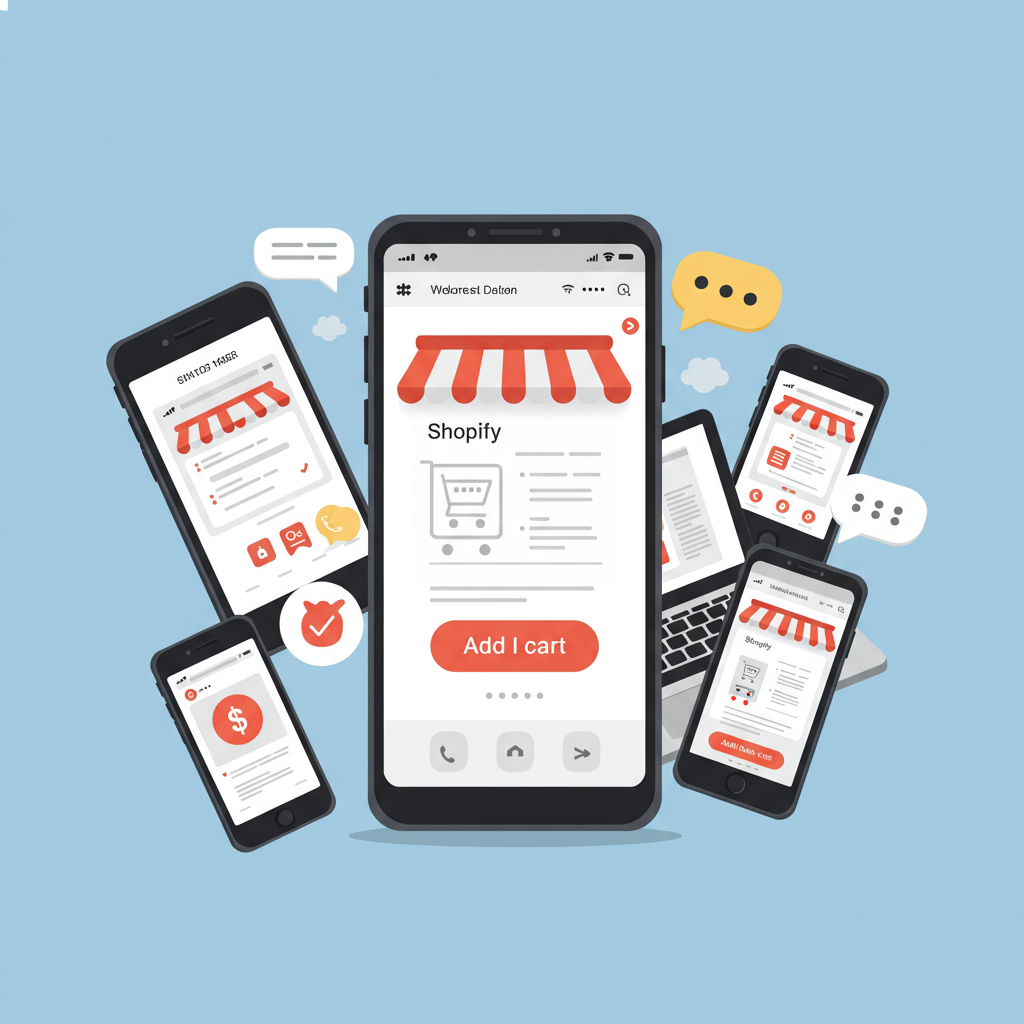Ensuring Your E-commerce Success in a Mobile-Dominated World
Hello fellow Shopify merchants! Today, I want to talk about something incredibly vital for your online success: designing a mobile-first Shopify store.
In my experience, this isn’t just a trend; it’s the standard. More and more, your customers are browsing, discovering, and purchasing from their smartphones.
Think about it: when was the last time you made a significant online purchase without at least checking it on your phone first? Probably not recently.
Ignoring mobile optimization is like closing your doors to a huge segment of your potential customer base. It’s simply not an option in today’s e-commerce landscape.
So, what exactly does “mobile-first” mean? It means designing your store with the smallest screen in mind first, then progressively enhancing it for larger screens.
This approach forces you to prioritize content, focus on essential elements, and ensure a seamless experience even with limited screen real estate.
My first piece of advice is to choose a mobile-responsive Shopify theme. Shopify’s theme store offers many excellent options that are built with responsiveness in mind.
When selecting a theme, I always look for one that clearly states its mobile-friendliness and offers a clean, uncluttered layout. Simplicity is key on mobile.
Next, let’s talk about speed. Mobile users are notoriously impatient. A slow-loading site will lead to high bounce rates and lost sales.
I always emphasize optimizing images. Large, uncompressed images are a major culprit for slow load times. Use tools to compress them without sacrificing quality.
Shopify has built-in image optimization, but I often use external tools or apps to ensure my images are perfectly sized and compressed for web use.
Beyond images, minimize unnecessary apps and scripts. Every extra piece of code adds to your load time. Only keep what truly adds value to your customer’s journey.
Navigation is another critical area. On mobile, complex menus are a nightmare. I recommend using a clear, concise “hamburger” menu icon.
Ensure your main categories are easily accessible and that the search bar is prominent. Customers on mobile often know what they’re looking for.
Product pages need special attention. Your product photos should be high-quality, zoomable, and optimized for mobile viewing. Think vertical, not just horizontal.
Product descriptions should be concise and scannable. Use bullet points and short paragraphs. Get straight to the benefits and key features.
The “Add to Cart” button must be large, clearly visible, and easy to tap. It should stand out and be positioned where users expect it.
I also make sure that product variants (sizes, colors) are easy to select with touch-friendly buttons or dropdowns, not tiny text links.
The checkout process is where many mobile sales are lost. My goal is always to make it as frictionless as possible.
Enable accelerated checkouts like Shop Pay, Apple Pay, or Google Pay. These significantly reduce the number of steps and data entry required from your mobile customers.
Minimize form fields. Only ask for essential information. The less typing a customer has to do on a small keyboard, the better.
What do you think about the importance of mobile-first design for your own Shopify store? I’d love to hear your perspective.
Regularly test your store on various mobile devices and browsers. What looks good on your iPhone might look different on an Android tablet.
Use Shopify’s built-in analytics and Google Analytics to monitor mobile traffic, bounce rates, and conversion rates. This data is invaluable for identifying areas for improvement.
Don’t be afraid to iterate. E-commerce is constantly evolving, and so should your store. Small, continuous improvements based on data can lead to significant gains.
Consider implementing a Progressive Web App (PWA) for an app-like experience without requiring a download. Shopify has options for this.
While not always necessary, exploring Accelerated Mobile Pages (AMP) for blog content can also boost speed for content-heavy pages.
Finally, remember that mobile-first isn’t just about aesthetics; it’s about creating an efficient, enjoyable, and trustworthy shopping experience for your customers, wherever they are.
By prioritizing mobile, you’re not just adapting to the present; you’re future-proofing your Shopify business for continued success.






